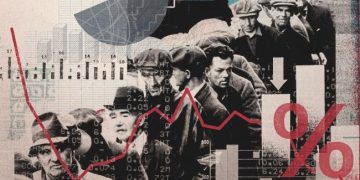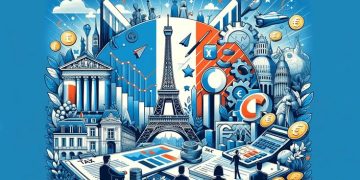Introduction: A Comparative Analysis of How the US and Europe Are Leading the Digital Transformation of the Financial Services Industry
The financial services industry is undergoing a profound digital transformation that is being shaped by innovation, regulation, and cross-border collaboration. The rise of fintech—financial technology—has revolutionized traditional banking models, creating new opportunities and challenges for businesses and consumers alike. While both the United States and Europe are at the forefront of this transformation, each region brings unique strengths, regulatory approaches, and market dynamics to the fintech table.
In the US, fintech companies have leveraged the power of Silicon Valley innovation, private equity investment, and a relatively light regulatory framework to spur rapid growth in payment systems, blockchain, and lending platforms. Meanwhile, Europe’s approach to fintech is more regulation-focused, with a strong emphasis on creating a secure and inclusive digital financial ecosystem. The EU’s Digital Finance Package and initiatives such as open banking aim to foster innovation while safeguarding consumer protection and financial stability.
This article provides a detailed comparative analysis of how both the US and Europe are leading the digital transformation of the financial services industry, focusing on fintech startups, innovations, regulatory landscapes, and cross-continental partnerships.
US Fintech Landscape: Exploring the Booming Fintech Scene in the US
The United States has long been a hub for fintech innovation, driven by its dynamic venture capital ecosystem, cutting-edge technology, and entrepreneurial culture. The US fintech scene is arguably the largest and most diverse globally, with Silicon Valley and cities like New York, Austin, and Chicago emerging as key hotspots for fintech development.
Payment Systems
One of the most prominent areas of growth in US fintech has been digital payments. The success of companies like PayPal, Square, Stripe, and Venmo has transformed how consumers and businesses exchange money. Digital wallets and mobile payment platforms have not only replaced traditional cash and card payments but have also enabled peer-to-peer transactions, cryptocurrency payments, and cross-border remittances.
The expansion of contactless payments and QR codes has gained momentum, particularly during the COVID-19 pandemic, which accelerated the shift toward cashless transactions. The rise of Buy Now, Pay Later (BNPL) services like Affirm and Klarna (which also has a strong European presence) has been another noteworthy trend in US fintech, enabling consumers to access credit in increasingly flexible ways.
Blockchain and Cryptocurrencies
Blockchain technology has also found fertile ground in the US, particularly with the rise of cryptocurrencies like Bitcoin and Ethereum. Cryptocurrency exchanges such as Coinbase, Gemini, and Kraken have propelled digital assets into the mainstream, while venture-backed blockchain startups are exploring innovative use cases beyond cryptocurrencies, including decentralized finance (DeFi), smart contracts, and NFTs (non-fungible tokens).
In addition, smart contract platforms are enabling the development of decentralized applications (dApps), allowing businesses to bypass traditional intermediaries and automate complex financial transactions. As blockchain technology continues to gain traction in fintech, the US remains a global leader in attracting venture capital for blockchain and crypto-related innovations.
Lending Platforms
The US is also home to a robust ecosystem of peer-to-peer lending platforms like LendingClub, Prosper, and Upstart, which have disrupted traditional banking models by connecting borrowers directly with investors. These platforms leverage AI, machine learning, and big data to assess credit risk, enabling alternative lending to individuals and small businesses who might not qualify for traditional bank loans. This has democratized access to credit and introduced more financial inclusivity into the market.
EU Regulatory Environment: Analyzing Europe’s Approach to Fintech Regulation
In contrast to the relatively hands-off regulatory approach of the United States, Europe has adopted a more structured regulatory framework to foster innovation while safeguarding consumer rights and financial stability. The European Union’s regulatory landscape is characterized by a set of policies aimed at creating a secure digital financial ecosystem.
The Digital Finance Package
One of the EU’s most significant regulatory initiatives is the Digital Finance Package, which was introduced in 2020. The package is a comprehensive set of rules and guidelines designed to accelerate the digital transformation of Europe’s financial sector while ensuring that new technologies are implemented safely and securely. Key elements of the Digital Finance Package include:
- Cryptocurrency Regulation: The EU has set out to establish a clear regulatory framework for cryptocurrencies and stablecoins with MiCA (Markets in Crypto-assets Regulation). This framework aims to ensure that the crypto market remains stable and resilient while promoting transparency and protecting consumers.
- Digital Operational Resilience: The EU is taking steps to improve the operational resilience of financial institutions through the Digital Operational Resilience Act (DORA), which strengthens the EU financial sector’s ability to withstand cyberattacks, technological disruptions, and other risks inherent in digital finance.
Open Banking and PSD2
Another critical area of regulation in Europe is open banking—the practice of making financial data available to third-party providers through APIs (Application Programming Interfaces). The Payment Services Directive (PSD2), implemented in 2018, mandates that banks provide access to customer data (with consent) to fintech startups and third-party developers. This has led to the emergence of a more competitive and innovative payments ecosystem, as consumers can access a wider range of personal finance tools, including budgeting apps, alternative lending options, and payment platforms.
Open banking has spurred the development of neo-banks like Revolut, N26, and Monzo, which leverage APIs to provide innovative financial services to consumers and businesses. These platforms have gained significant traction by offering digital-first banking solutions and lower fees compared to traditional banks.

Regulatory Divergence Between the US and EU
While the US has generally taken a more light-touch approach to fintech regulation, the EU’s comprehensive regulatory framework has given it a unique position. In particular, European regulations on data protection (e.g., GDPR), anti-money laundering (AML), and consumer protection are stricter than in the US. This could provide European fintech companies with a more robust and trustworthy regulatory environment, which may appeal to consumers and investors looking for greater security and privacy protection.
However, the EU’s more stringent regulatory approach could also stifle innovation, as startups and investors may face higher compliance costs and regulatory hurdles compared to their US counterparts.
Cross-Continental Partnerships: How US and European Fintech Companies Are Collaborating
Despite regulatory differences, fintech companies from both sides of the Atlantic have increasingly been forming cross-border partnerships and expanding into each other’s markets. The collaboration between US and European fintech players is creating a global ecosystem of financial innovation, particularly in areas like digital wallets, cross-border payments, and blockchain technology.
Digital Wallets and Cross-Border Payments
US-based companies like PayPal and Stripe have made significant inroads into the European market, while European companies like Revolut and TransferWise (now Wise) have expanded their reach into the US. One of the key areas of focus for these companies is cross-border payments, where both regions are leveraging technology to reduce costs and increase transaction speed.
For example, Wise has built a global payment network that allows users to send money across borders at lower fees than traditional banks, and Revolut offers a range of international banking services, including currency exchange, stock trading, and cryptocurrency transactions, all within a mobile app.
These collaborations help mitigate the barriers created by different regulatory environments and pave the way for more seamless, borderless financial services.
Outlook: Will Regulatory Differences Hinder the Growth of Transatlantic Fintech Partnerships?
Despite the regulatory differences between the US and Europe, the growing demand for digital financial solutions, along with the increasing globalization of fintech, suggests that both regions will continue to play a significant role in shaping the future of financial services.
The key challenge, however, will be whether the regulatory divergence will impede cross-border partnerships or whether innovative solutions will emerge to harmonize these differences. As fintech companies increasingly seek to operate globally, cooperation between regulators, particularly on issues like data protection, AML, and cross-border payments, will be essential to create a more cohesive global fintech ecosystem.
Ultimately, it’s likely that the US and Europe will continue to complement each other’s strengths in fintech, with the US leading in disruptive innovation and the EU offering a more regulated, secure, and consumer-friendly environment.




































